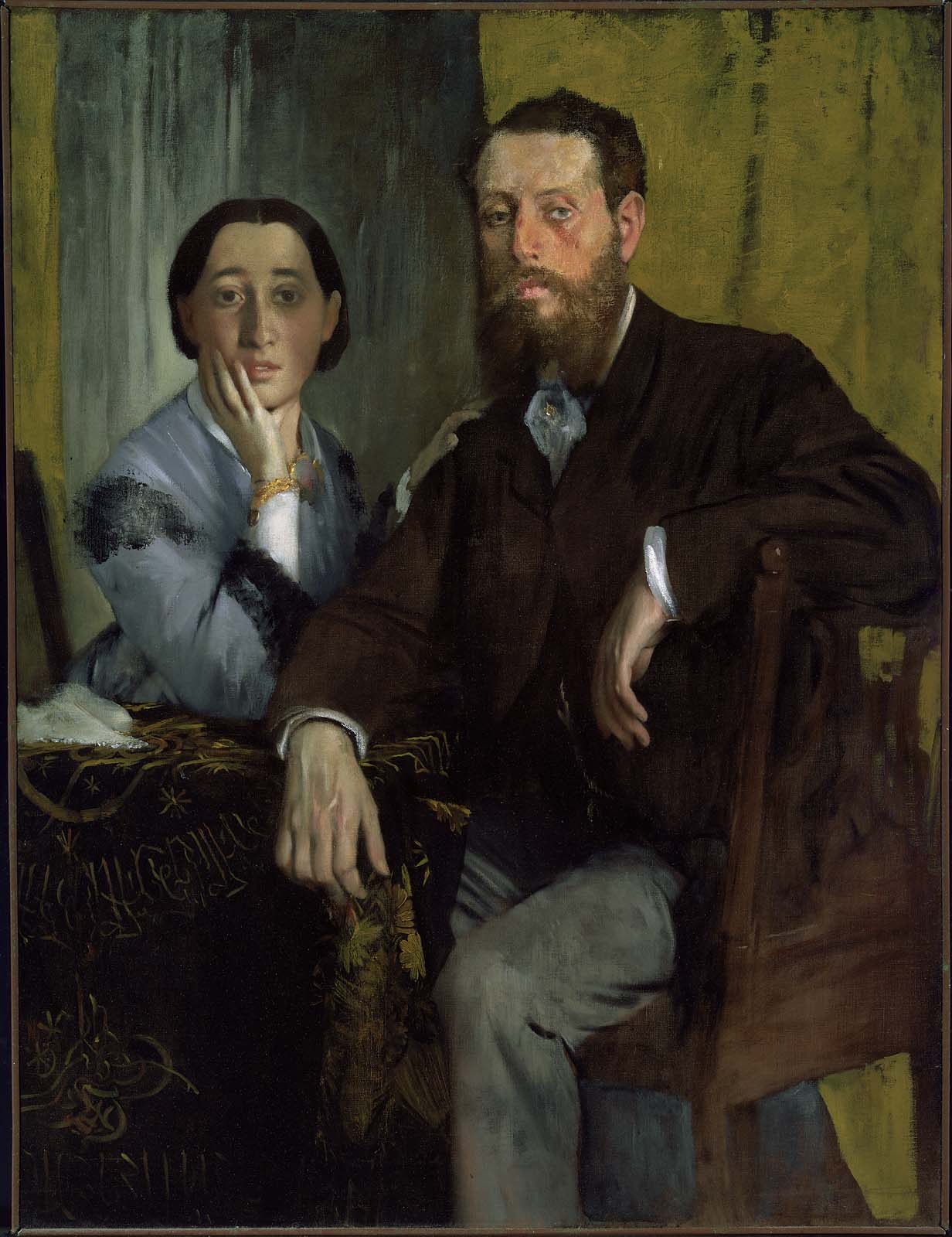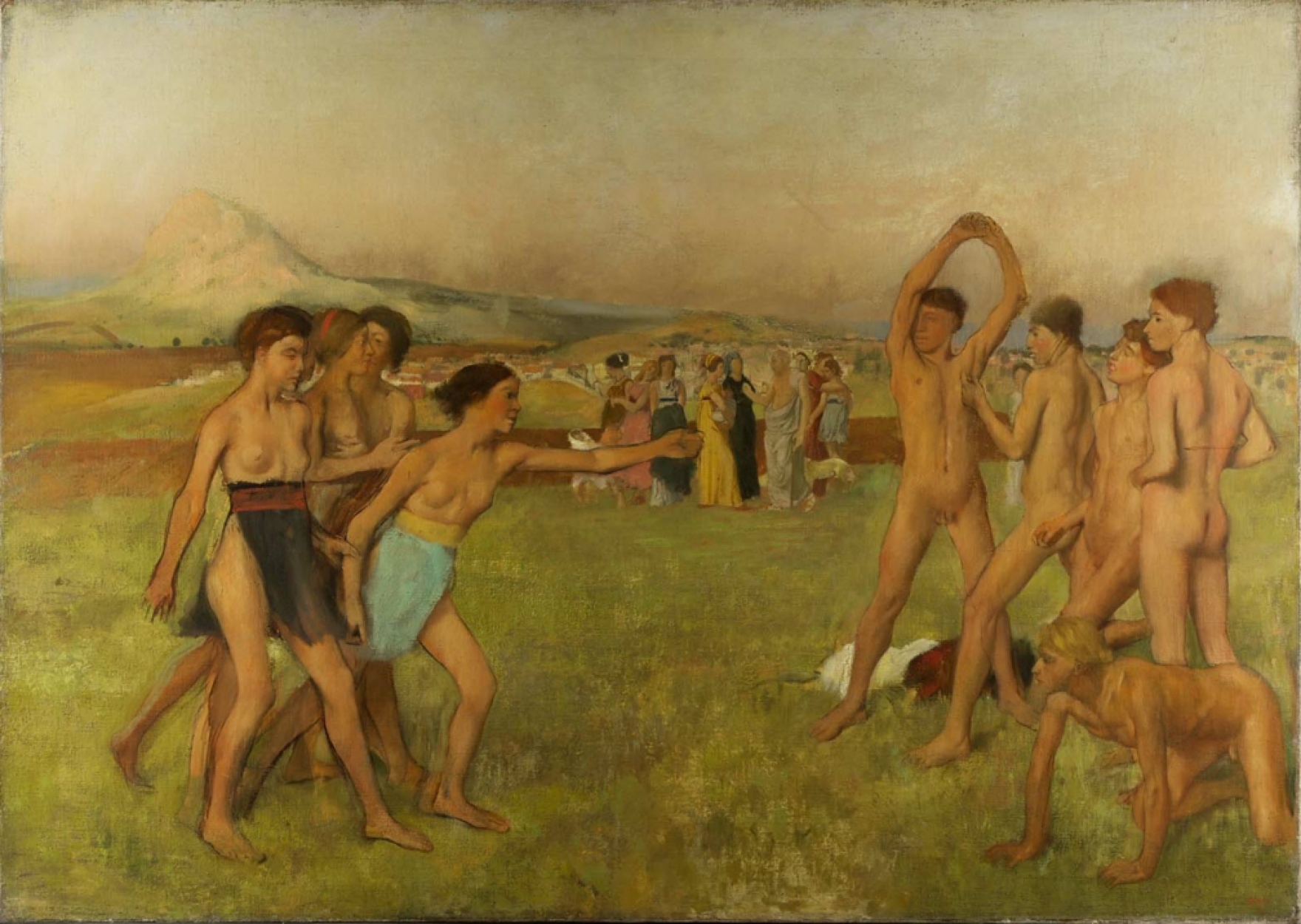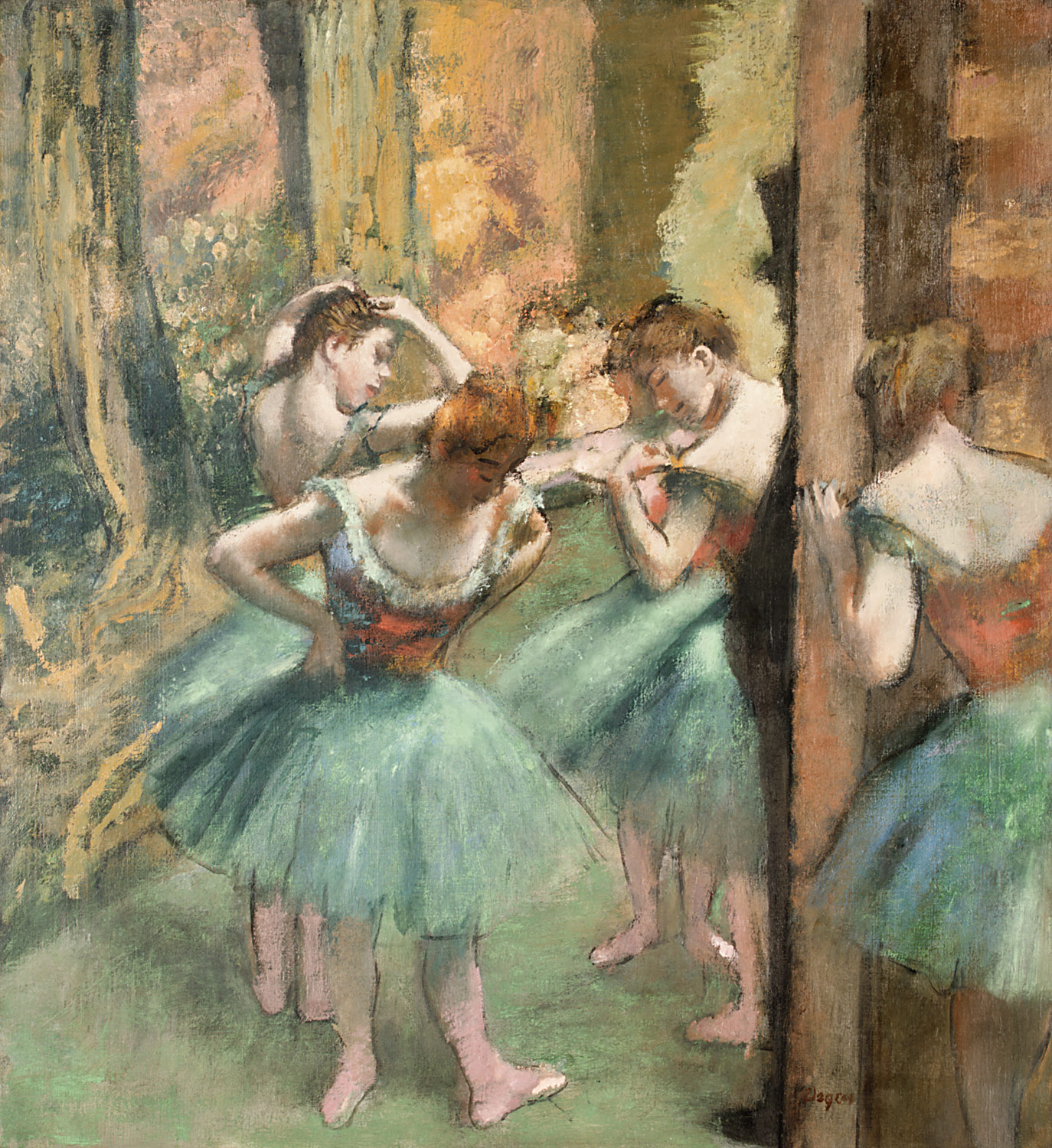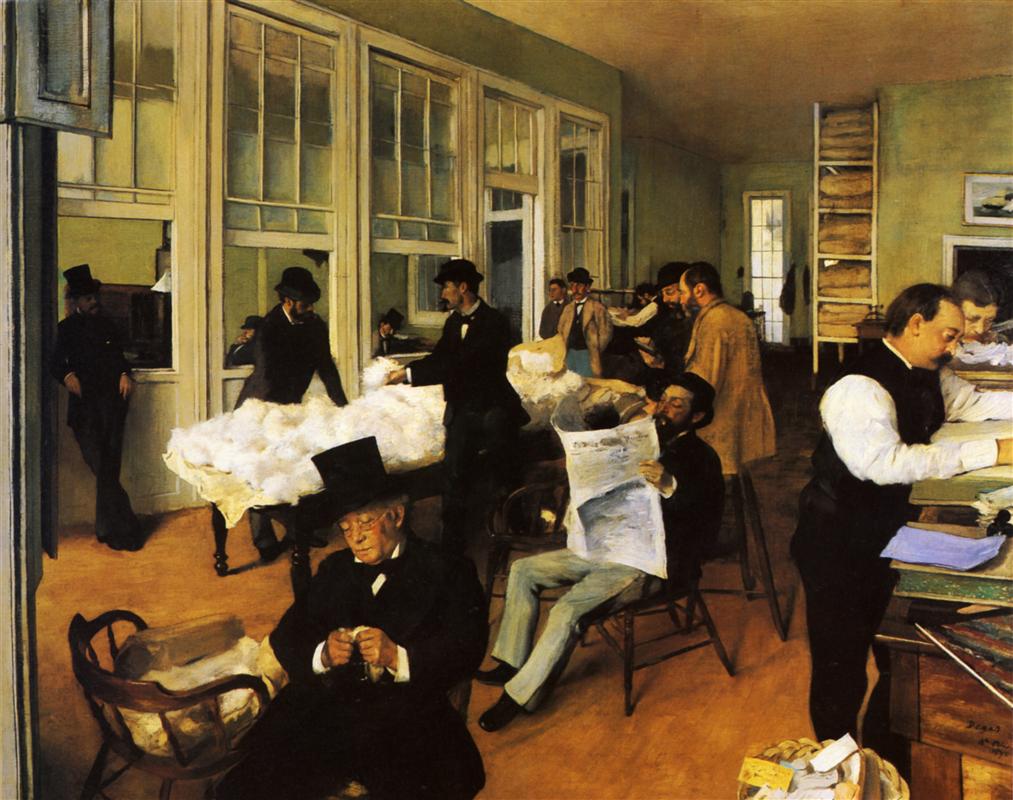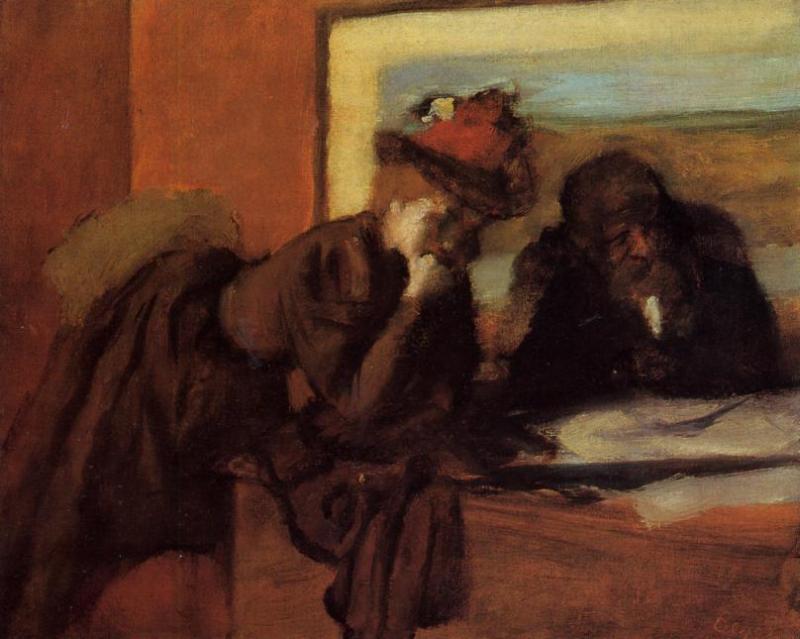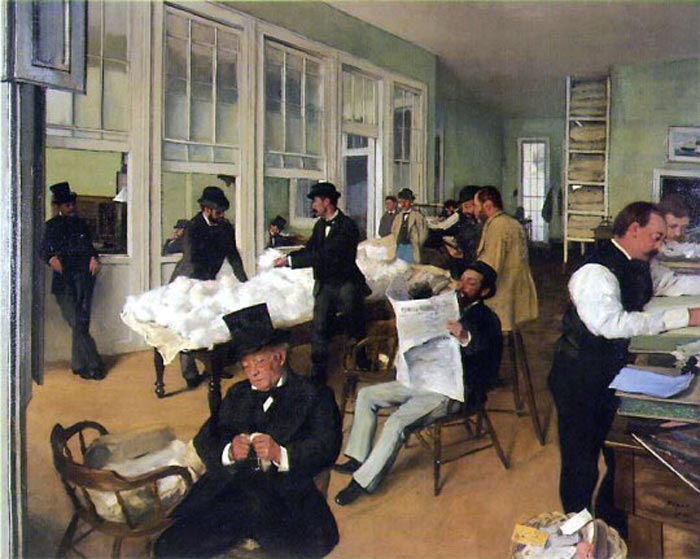National Gallery of Victoria
24 June – 18 September 2016
Museum of Fine Arts, Houston
October 16 2016 -
The MFAH has developed this major retrospective with the National Gallery of Victoria, in association with Art Exhibitions Australia. Some 60 additional loans will be exclusive to the Houston presentation, including such major works as Dancers, Pink and Green, from the Metropolitan Museum of Art, as well as preparatory drawings reunited with the iconic paintings that evolved from them, including
Ballet Scene from Meyerbeer's Opera “Robert the Devil.”
Not since the 1988 landmark retrospective Degas—organized by Henri Loyrette, then at the Grand Palais in Paris; Gary Tinterow, then a curator at the Metropolitan Museum of Art in New York; and the late Jean Sutherland Boggs of the National Gallery of Canada in Ottawa—has the artist’s career been fully assessed.
“The objective of Degas in 1988 was to piece together Degas’s work as a whole, in an accurate chronology; though it may seem surprising now, that had never been done,” said MFAH director Gary Tinterow. “That exhibition led to a revival of interest in Degas, and dozens of shows focused on individual subjects of his work—the bathers, the dancers, the jockeys, the portraits—or his influence on other artists. Now, we are able to benefit from that scholarship and, led by Henri Loyrette, the preeminent Degas biographer and scholar, put Degas back together again, and see the artist anew.”
“Degas: A New Vision will explore Degas’s measured continuity, his journey as he reworks one painting after another, and his total refusal to settle on a definitive composition,” commented Henri Loyrette, the Paris-based Degas scholar and former director of the Louvre who is the organizing curator of the exhibition. “This is the distinctive genius of Degas, which makes him both a precursor and particularly relevant to today. Each period looks at the artist in a different way. What can he tell us today? That is the basic purpose of this show.”
Exhibition Overview
Degas: A New Vision reveals the continuity within Degas’s work from the beginning to the end of his career, as he restlessly moved among the media of oil painting, drawing, pastel, photography, printmaking, and sculpture, all the while employing common themes and approaches, revisiting poses and motifs that he had used decades earlier, and reworking paintings that he kept in his studio.
Degas’s earliest work, from the mid-1850s, is rooted in the Renaissance; in one early self-portrait he depicts himself as a Florentine courtier.
By the late 1850s, Degas had shifted to multi-figure compositions, among them the double portrait of his brother-in-law and sister,
Edmondo and Thérèse Morbilli (1865). This vignette of daily life, set in a nondescript, bourgeois environment, reveals a fascinating interplay of the couples’ relationship: in this depiction, Thérèse remains no more than the shadow of her husband, half hidden behind the table, with one hand grasping her cheek and the other anxiously reaching for Edmondo.
From paintings like the Morbilli portrait, Degas moved to modern history painting based on classical subjects, experimenting as he deployed multiple figures on a canvas.
In two studies for Young Spartans Exercising and Scene of War, both from the mid-1860s, Degas uses a range of expressive posture and unusual pose that had not been seen before in painting. In addition, both works feature posed figures that Degas would revisit in very different contexts 20, even 40 years later.
By the late 1860s, Degas had abandoned these mythological and classical subjects. “After a great many essays and experiments and trial shots in all directions, he has fallen in love with modern life,” the great critic, artist, and writer Edmond de Goncourt wrote in 1874, following a visit to Degas’s studio.
At his height, in the 1870s and 1880s, Degas pursued every facet, high and low, of modern life: café scenes, in his iconic
In a café (1875), also known as L’absinthe;
jockeys and steeplechases, in Out of the Paddock (Racehorses) (1868–72)
and Before the Race (c. 1882);

student ballerinas in Dance Foyer of the Opera at Rue Le Peletier (1872),
The Dance Class (1873),
and Dancers, Pink and Green (1890);
everyday routines in the brothel, in The Name Day of the Madam (1879);
life below stairs, in Women Ironing (1884–86).
A trip to visit his mother’s family in Louisiana produced his famous
A Cotton Market in New Orleans (1873). All are complex, multi-figure compositions with the focus on the incidental or the moment of anticipation: a young dancer about to perform a step; the top-hatted silhouette of a standing man in a room crowded with young ballerinas; the man reading the newspaper amid the bustle of the cotton exchange.
Still, Degas continued to mine his earlier work for poses and postures.
The young lady leaning on her elbows toward a man at his desk in the 1870 interior Sulking, who looks up at the viewer as if interrupted,
becomes the older woman in a pensive tête-à-tête in the 1885 Conversation.
Degas would continue to explore variations on a single subject, such as the female nude, creating them in different media across more than half a century. A lesser-known aspect of this creative journey included a short, but intensive, foray into photography. Degas’s photographs—the majority of which were produced during the year 1895 and feature his inner circle of family members, friends, and fellow artists—reveal how the artist used the medium both as part of a creative continuum that included paintings and pastels and as an experiment with a new form of visual expression, resulting in photographic figure studies, portraits, and self-portraits that stand alone as works of art in their own right. Degas: A New Vision will unite over 20 of his surviving photographs for the first time since the 1998 exhibition Edgar Degas: Photographer, which debuted at the Metropolitan Museum of Art in New York and traveled to the J. Paul Getty Museum in Los Angeles and the Bibliothèque Nationale de France in Paris.
“Thirty years ago, no one even considered Degas’s late work, but the 1988 exhibition changed the public’s mind,” Loyrette said. Tinterow added, “The revelation then was how strong and modern the end of Degas’s career was—allowing us to see, for example, how artists like Lucien Freud can show us the shocking modernity of late Degas, and how we can appreciate the extravagant color and expressive line.” Degas himself said that by the 1890s he had given himself over to “an orgy of color.” The two figures in
Combing the Hair (The Coiffure, 1896; once owned by Henri Matisse) are rendered in a blaze of red;
The Bathers and other late studies depict female nude figures—alone or in groups; some composed, others random. For Degas, these expressions of the female form showed women as they saw, rather than imagined, themselves.
Although organized chronologically overall, the exhibition will also present specific groupings devoted to a particular theme or technique. In all, some 200 works will trace Degas’s career, across painting, drawing, photography, printmaking, and sculpture. The exhibition is drawn from private collections around the world as well as public collections that include those of the Musée d’Orsay in Paris, the National Gallery of London; the Metropolitan Museum of Art in New York, the Harvard Art Museums; Yale University Art Gallery; the Museum of Fine Arts, Boston; the Philadelphia Museum of Art; the Brooklyn Museum of Art; the J. Paul Getty Museum in Los Angeles; the Los Angeles County Museum of Art; the Thyssen-Bornemisza Museum in Madrid; and the Kunstmuseum Basel in Switzerland.
Publication
The exhibition will be accompanied by the monographic publication Degas: A New Vision, with principal essays by Henri Loyrette and a foreword by Tony Ellwood, director of the National Gallery of Victoria; Gary Tinterow, director of the MFAH; and Carol Henry, CEO of Art Exhibitions Australia.
Rehearsal hall at the Opera, rue Le Peletier, 1872, by Edgar Degas. (Musée d'Orsay, Paris)
Degas: A New Vision will provide audiences with a rare experience to truly be immersed in the creativity and originality of his art, giving visitors a deeper and richer understanding of his brilliance.’ Degas: A New Vision will be presented thematically, grouping together the subjects which Degas continually returned to throughou t his career, including not only his famous ballet scenes but also arresting portraits, the nude, horse - racing, the social world of Parisian nightlife, and women at work and leisure.
Edgar Degas The Arabesque 1877 oil and essence, pastel on canvas, Musée d’Orsay, Paris, Lemoisne 418 (RF 4040) © Musée d’Orsay, Dist. RMN-Grand Palais /Patrice Schmidt
The exhibition will also explore the great technical, conceptual and expressive freedoms that Degas achieved in his later years, and reveal his experiments with a range of mediums including sculpture and photography. This approach will emphasize Degas’ obsessive and highly creative working methods, and allow visitors to enjoy the development of Degas’ art from its beginnings.
Edgar Degas, The little fourteen-year-old dancer 1879–81, bronze with cotton skirt and satin ribbon, 99.0 cm (height), Museu de Arte de São Paulo, Assis Chateaubriand, Donated by Alberto José Alves, Alberto Alves Filho and Alcino Ribeiro de Lima (426 E)
Degas was fascinated by aspects of modern life – voraciously painting Paris’ dance halls and cabarets, cafés, racetracks, opera and ballet stages. He also s tudied the simple, everyday gestures of working women: milliners, dressmakers, and laundresses. He was drawn to explore movement that was precise and disciplined, such as that of racehorses and ballet dancers, and absorbed a diverse range of influences from Japanese prints to Italian Mannerism.
Edgar Degas, The song rehearsal 1872–73 oil on canvas 81 x 64.9 cm Dumbarton Oaks Research Library and Collection, Washington D.C
BIOGRAPHY
Edgar Degas was born in 1834 into a wealthy banking family. Unlike many of his contemporaries, his family were supportive of his artistic talent and desire to become an artist. Degas resisted being labelled an ‘Impressionist’ yet was at the core of the movement’s most important manifestations. Classically trained, Degas initially aspired to be a painter of historical narratives.
As he matured, however, he made the depiction of daily life the central focus of his art. He was drawn primarily to the human figure engaged in movement and work, sketching on the spot then working up his finished compositions indoors in his studio.
Degas’ obsession with the theatre and ballet in particular enabled him to explore his fascination with artificial light, which set him apart from the other Impressionists who preferred to work out - of - doors capturing the transient effects of natural daylight. Degas absorbed many diverse influences, from Japanese prints to Italian Mannerism, and reinterpreted them in innovative ways.
Degas obsessively revisited and experimented with his favourite themes which saw him fashion varied and unusual vantage points and asymmetrical framing. His depictions of ballet dancers alone number in the hundreds. Such endeavours helped him to achieve the innovative and distinctive style which will be explored in Degas: A New Vision.
Degas served in the Franco - Prussian War of 1870 – 71 and began to experience eyesight deterioration by the late 1880s. He increasingly took up sculpture as his eyesight weakened. In his later years, he w as preoccupied with the subject of women bathing unselfconsciously and developed an expressive use of colour and line that may have arisen due to his deteriorating vision.
Degas continued working to as late as 1912. He died five years later in 1917, at the age of eighty – three.
More images
Fascinating article: https://www.theguardian.com/culture/2004/oct/30/1
Edgar Degas was born in 1834 into a wealthy banking family. Unlike many of his contemporaries, his family were supportive of his artistic talent and desire to become an artist. Degas resisted being labelled an ‘Impressionist’ yet was at the core of the movement’s most important manifestations. Classically trained, Degas initially aspired to be a painter of historical narratives.
Edgar Degas, A cotton office in New Orleans 1873 oil on canvas 73 x 92 cm Musée des Beaux-Arts de Pau Lemoisne 320, © RMN-Grand Palais / Michèle Bellot / Madeleine Coursaget
As he matured, however, he made the depiction of daily life the central focus of his art. He was drawn primarily to the human figure engaged in movement and work, sketching on the spot then working up his finished compositions indoors in his studio.
Degas’ obsession with the theatre and ballet in particular enabled him to explore his fascination with artificial light, which set him apart from the other Impressionists who preferred to work out - of - doors capturing the transient effects of natural daylight. Degas absorbed many diverse influences, from Japanese prints to Italian Mannerism, and reinterpreted them in innovative ways.
Degas obsessively revisited and experimented with his favourite themes which saw him fashion varied and unusual vantage points and asymmetrical framing. His depictions of ballet dancers alone number in the hundreds. Such endeavours helped him to achieve the innovative and distinctive style which will be explored in Degas: A New Vision.
Degas served in the Franco - Prussian War of 1870 – 71 and began to experience eyesight deterioration by the late 1880s. He increasingly took up sculpture as his eyesight weakened. In his later years, he w as preoccupied with the subject of women bathing unselfconsciously and developed an expressive use of colour and line that may have arisen due to his deteriorating vision.
Degas continued working to as late as 1912. He died five years later in 1917, at the age of eighty – three.
More images
Fascinating article: https://www.theguardian.com/culture/2004/oct/30/1


